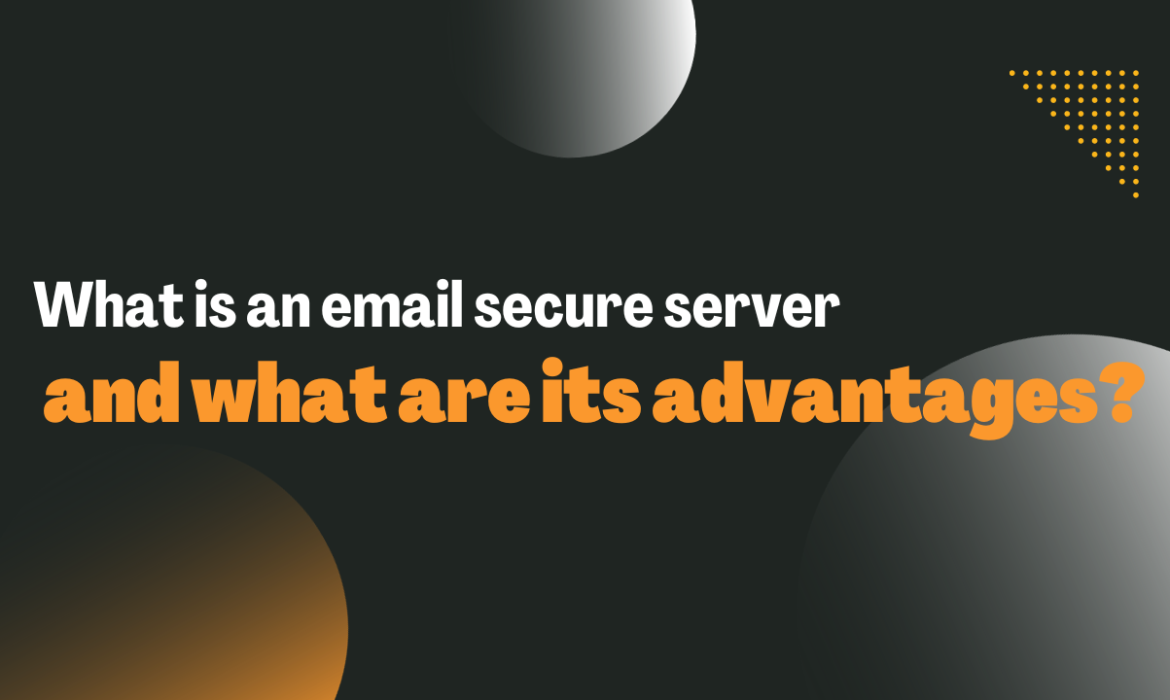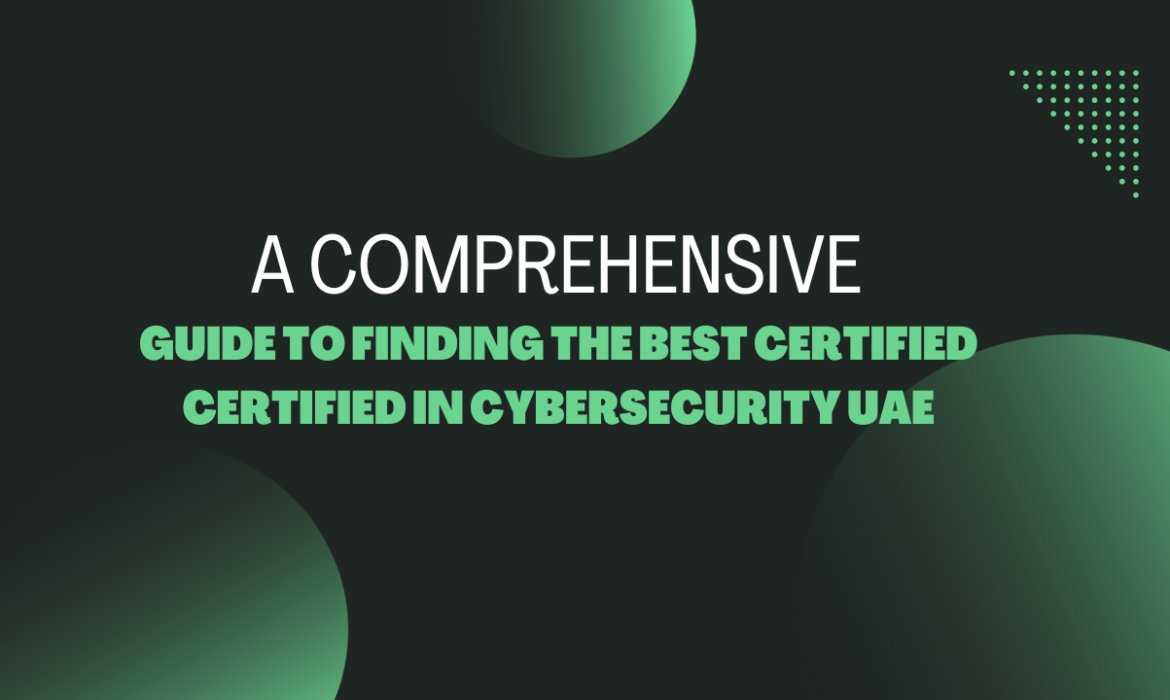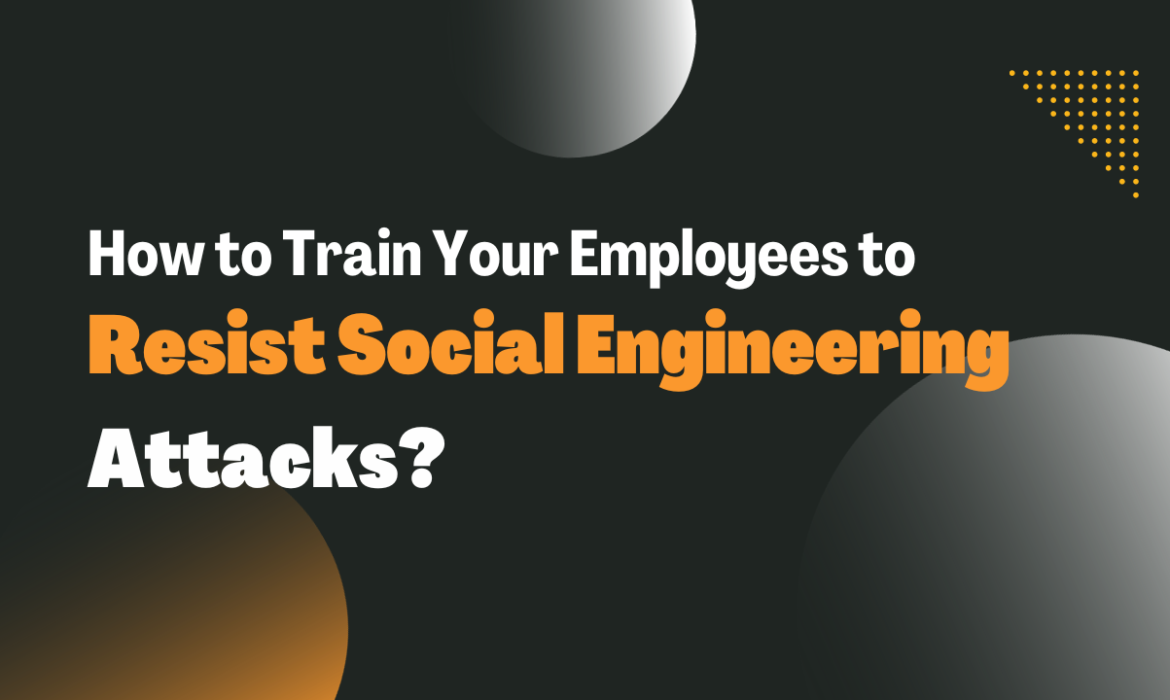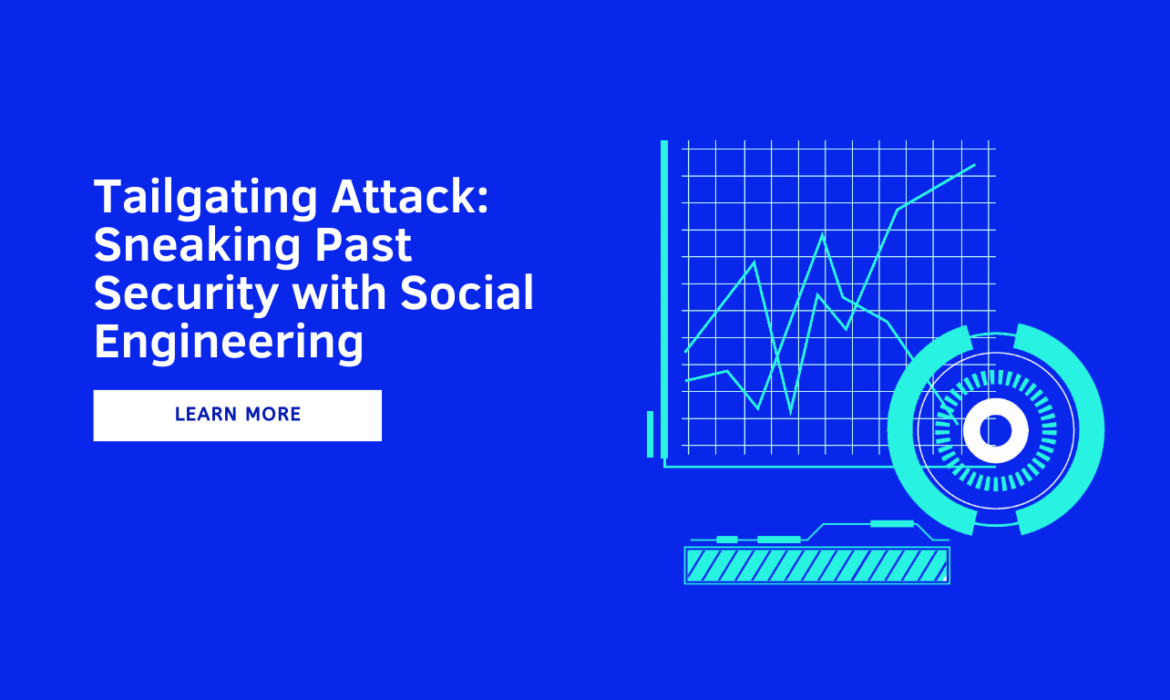What is an email secure server and what are its advantages?
In an era where digital communication reigns supreme, the security of sensitive information is of paramount importance. Businesses and individuals alike heavily rely on email for communication, making it crucial to ensure that this mode of correspondence is safeguarded against potential threats. Enter the realm of email secure servers – the unsung heroes of the digital landscape. In this comprehensive exploration, we will unravel the intricacies of what an email secure server is and delve into the myriad advantages it brings to the table.
Understanding Email Secure Servers: A Primer
Before we dive into the advantages, let’s establish a foundational understanding of what an email secure server entails.
What is an Email Secure Server?
An email secure server is a specialized mail server equipped with advanced email security features designed to fortify the confidentiality, integrity, and availability of email communications. Unlike traditional email servers, these secure counterparts prioritize the protection of sensitive data against cyber threats, ensuring that messages and attachments are shielded from unauthorized access and malicious activities.
Key Components of an Email Secure Server:
Encryption Protocols:
One of the core features of an email secure server is its use of encryption protocols, such as Transport Layer Security (TLS). This ensures that the transmission of emails between servers remains secure, mitigating the risk of eavesdropping and interception.
Authentication Mechanisms:
Secure servers implement robust authentication mechanisms to verify the identity of users and systems. This helps prevent email spoofing and unauthorized access to the server, ensuring that only legitimate entities can send or receive emails.
Spam and Malware Filtering:
Advanced spam and malware filters are integrated into secure servers to identify and block malicious content. This serves as a proactive defense against phishing attacks, viruses, and other forms of malware that may compromise the integrity of email communications.
Access Controls:
Access control features are implemented to regulate and manage user permissions. This ensures that only authorized individuals have access to sensitive information and configuration settings, reducing the risk of unauthorized data access.
Data Loss Prevention (DLP):
Email secure servers often incorporate Data Loss Prevention mechanisms to monitor and control the flow of sensitive information within emails. This helps prevent accidental or intentional data leakage, a critical concern in today’s data-driven landscape.
Audit Trails and Logging:
Comprehensive logging and audit trail functionalities are essential components of email secure servers. These features enable administrators to monitor and track email activities, facilitating the identification and investigation of security incidents.
Multi-Factor Authentication (MFA):
To add an extra layer of security, many email secure servers support multi-factor authentication. This involves requiring users to provide multiple forms of identification before accessing their email accounts, significantly enhancing security measures.
Regular Software Updates:
Keeping the email server software up-to-date is a fundamental aspect of maintaining email security. Regular updates address vulnerabilities and security flaws, ensuring that the server remains resilient against emerging threats.
Compliance with Regulations:
Email secure servers are designed to comply with data protection and privacy regulations. This is particularly crucial for organizations handling sensitive or personal information, as adherence to regulatory standards is non-negotiable in today’s legal landscape.
Secure Communication Protocols:
Secure servers support encrypted communication protocols for email clients, such as Secure Sockets Layer (SSL) or TLS. This ensures that data exchanged between the client and the server remains encrypted, safeguarding it from potential interception.
Secure servers implement robust authentication mechanisms to verify the identity of users and systems. This helps prevent email spoofing and unauthorized access to the server, ensuring that only legitimate entities can send or receive emails.
Also Read: A Comprehensive Guide to Finding the Best Certified Certified in Cybersecurity UAE
Advantages of Email Secure Servers:
Now that we have a comprehensive understanding of what email secure servers entail, let’s explore the numerous advantages they bring to the forefront.
1. Enhanced Confidentiality:
Emails often contain sensitive information, ranging from financial data to personal communications. An email secure server encrypts these messages, ensuring that even if intercepted, the content remains unintelligible to unauthorized entities. This heightened level of confidentiality is paramount for businesses and individuals who prioritize the privacy of their communications.
2. Mitigation of Phishing Attacks:
Phishing attacks, where malicious actors attempt to deceive individuals into revealing sensitive information, are prevalent in the digital landscape. Email secure servers employ advanced phishing detection mechanisms, reducing the likelihood of users falling victim to fraudulent schemes. This proactive approach protects both individuals and organizations from the potentially devastating consequences of phishing attacks.
3. Protection Against Malware:
Malicious software, or malware, poses a significant threat to the integrity of digital communications. Email secure servers act as a first line of defense by implementing robust malware filters. These filters identify and quarantine malicious attachments or links, preventing users from inadvertently downloading harmful content.
4. Secure Data Transmission:
The encryption protocols employed by email secure servers ensure that data transmitted between servers remains secure and impervious to interception. This is especially crucial in scenarios where sensitive information, such as financial transactions or legal documents, is communicated via email. The secure transmission of data instills confidence in both senders and recipients, fostering a trust-based digital communication environment.
5. Identity Verification and Authentication:
Email spoofing, where attackers falsify the sender’s address to deceive recipients, is a common tactic employed in cyber attacks. Email secure servers utilize robust authentication mechanisms to verify the identity of the sender, mitigating the risk of fraudulent activities. This ensures that recipients can trust the authenticity of the emails they receive.
6. Access Control and Authorization:
Unauthorized access to sensitive information is a significant concern in the digital age. Email secure servers address this by implementing access control features that regulate user permissions. Only authorized individuals, such as administrators and designated users, have access to critical data and configuration settings, reducing the risk of data breaches.
7. Data Loss Prevention:
Accidental or intentional data leakage can have severe consequences for individuals and organizations. Email secure servers with Data Loss Prevention mechanisms monitor the content of emails, preventing the unauthorized transmission of sensitive information. This proactive approach safeguards against inadvertent data breaches and protects the reputation of businesses.
8. Comprehensive Logging and Auditing:
The ability to monitor and track email activities is a valuable asset in the realm of cybersecurity. Email secure servers provide comprehensive logging and auditing features, enabling administrators to review and analyze user actions. This not only aids in identifying security incidents but also serves as a deterrent to potential malicious activities.
9. Multi-Factor Authentication (MFA):
Passwords alone are no longer sufficient to protect against unauthorized access. Email secure servers that support multi-factor authentication add an extra layer of security by requiring users to provide multiple forms of identification. This significantly reduces the risk of unauthorized access, even in the event of compromised passwords.
10. Regulatory Compliance:
In an era where data protection and privacy regulations are stringent, compliance is non-negotiable. Email secure servers are designed with these regulations in mind, ensuring that organizations handling sensitive information adhere to legal standards. This not only avoids legal repercussions but also demonstrates a commitment to safeguarding user privacy.
11. Adaptability to Evolving Threats:
The digital landscape is dynamic, with cyber threats constantly evolving. Email secure servers, through regular software updates and security patches, remain adaptable to emerging threats. This proactive approach ensures that the server’s security measures stay ahead of potential vulnerabilities, maintaining a resilient defense against evolving cyber threats.
12. Trust and Reputation:
For businesses, maintaining trust with clients and partners is paramount. Email secure servers contribute to building and preserving this trust by ensuring the security of communication channels. The reputation of an organization is closely tied to its ability to safeguard sensitive information, and a secure email environment is a cornerstone of that assurance.
Also Read: Unveiling the Power of Vulnerability Assessment Tools: Safeguarding Your Digital Fortresses
Conclusion: Embracing the Security Shield of Email Secure Servers
In a world where digital communication is the lifeblood of both personal and professional interactions, the importance of secure email servers cannot be overstated. These technological guardians not only protect sensitive information but also contribute to the overall trustworthiness of digital communication channels.
As individuals and organizations navigate the complexities of the digital landscape, the adoption of email secure servers becomes a strategic imperative. The advantages discussed above – from enhanced confidentiality to adaptability against evolving threats – showcase the multifaceted benefits that secure servers bring to the forefront.
In conclusion, investing in the security of email communications is an investment in the trust, privacy, and integrity of digital interactions. As we continue to rely on email for communication, collaboration, and information exchange, the role of email secure servers will undoubtedly become even more pivotal in shaping a secure and resilient digital future. Contact us at Green Edge Computers to know more.
Unveiling the Power of Vulnerability Assessment Tools: Safeguarding Your Digital Fortresses
In the dynamic landscape of cybersecurity, staying one step ahead of potential threats is paramount. As businesses increasingly rely on digital platforms, the need for robust security measures has never been more critical. In this blog post, we will delve into the realm of vulnerability assessment tools, shedding light on their significance, functionalities, and the pivotal role they play in fortifying digital infrastructures.
Understanding Vulnerability Assessment:
Vulnerability assessment is a proactive approach to identifying and mitigating potential security risks in a system. It involves a systematic review of software, networks, and other IT assets to pinpoint vulnerabilities that could be exploited by malicious actors. The ultimate goal is to bolster the organization’s security posture and protect sensitive data from unauthorized access.
Key Functions of Vulnerability Assessment Tools:
Scanning for Weaknesses:
- Vulnerability assessment tools conduct comprehensive scans of a system, identifying potential weak points. These could include outdated software, misconfigurations, or unpatched vulnerabilities that might be exploited by cyber threats.
Risk Prioritization:
- Not all vulnerabilities pose an equal threat. These tools prioritize risks based on severity, helping organizations focus on addressing the most critical issues first. This ensures that resources are allocated efficiently to mitigate the most significant threats.
Compliance Monitoring:
- Many businesses operate in industries with stringent regulatory requirements. Vulnerability assessment tools assist in ensuring compliance with industry standards by continuously monitoring and reporting on vulnerabilities that could lead to compliance breaches.
Real-time Monitoring:
- The cybersecurity landscape is dynamic, with new threats emerging regularly. Vulnerability assessment tools provide real-time monitoring, enabling organizations to promptly respond to potential risks and fortify their defenses.
Popular Vulnerability Assessment Tools:
Nessus:
- Nessus is a widely used vulnerability scanner known for its extensive vulnerability database and efficient scanning capabilities. It provides in-depth analysis and produces detailed reports to aid in the remediation process.
OpenVAS:
- OpenVAS is an open-source vulnerability scanner that offers a cost-effective solution without compromising on functionality. It’s regularly updated to address new vulnerabilities and includes a user-friendly interface.
Qualys:
- Qualys is a cloud-based vulnerability management platform that provides a holistic view of an organization’s security posture. Its scalability and continuous monitoring make it a preferred choice for enterprises of all sizes.
Acunetix:
- Acunetix is a web application security scanner designed to identify vulnerabilities in web applications. It helps organizations secure their web assets by detecting and addressing potential threats specific to web-based environments.
Benefits of Implementing Vulnerability Assessment Tools:
Proactive Risk Mitigation:
- By identifying vulnerabilities before they can be exploited, organizations can proactively address potential risks, reducing the likelihood of a security breach.
Resource Optimization:
- Vulnerability assessment tools prioritize risks, allowing organizations to allocate resources efficiently and focus on the most critical security issues.
Comprehensive Security Posture:
- Continuous monitoring and real-time updates provided by these tools contribute to a more comprehensive and adaptive security posture, capable of addressing evolving threats.
Also Read: A Comprehensive Guide to Finding the Best Certified Certified in Cybersecurity UAE
Conclusion:
In an era where cyber threats continue to evolve in complexity, leveraging the power of vulnerability assessment tools is not just a best practice—it’s a necessity. By embracing these tools, organizations can fortify their digital fortresses, ensuring the resilience and security of their valuable assets. As the digital landscape expands, the proactive approach offered by vulnerability assessment tools will remain instrumental in safeguarding against emerging cyber threats. Implementing these tools is not merely a security measure; it’s an investment in the longevity and trustworthiness of your digital infrastructure. Contact us at Green Edge Computers to know more.
A Comprehensive Guide to Finding the Best Certified Certified in Cybersecurity UAE
In an era dominated by digital innovation, the importance of robust cybersecurity measures cannot be overstated. As businesses in the United Arab Emirates (UAE) navigate the complexities of an increasingly interconnected world, finding a trustworthy and certified cybersecurity company becomes paramount. In this comprehensive guide, we will delve into the key considerations and steps necessary to identify the best-certified cybersecurity company in the UAE, ensuring that your organization’s digital assets remain secure in the face of evolving cyber threats.
1. Understanding the Cybersecurity Landscape in the UAE:
Before embarking on the journey to find the best-certified cybersecurity company, it is crucial to grasp the unique challenges and dynamics of the cybersecurity landscape in the UAE. Explore the prevalent cyber threats, regulatory frameworks, and industry-specific nuances that shape the demand for robust cybersecurity solutions. Understanding the local context will empower you to make informed decisions when selecting a cybersecurity partner.
2. Identifying Certifications and Compliance Standards:
Certifications serve as a key indicator of a cybersecurity company’s commitment to industry best practices. Delve into the certifications and compliance standards that are relevant to the UAE’s cybersecurity landscape. Look for certifications such as ISO 27001, NESA (National Electronic Security Authority) compliance, and any industry-specific certifications that align with your organization’s needs. A certified cybersecurity company demonstrates a dedication to maintaining the highest standards of security.
3. Assessing Expertise and Specializations:
Cybersecurity is a multifaceted field, and different organizations may have unique requirements. Assess the expertise and specializations of potential cybersecurity partners. Consider whether the company has experience in your industry, a track record of successfully handling similar challenges, and a comprehensive understanding of the latest cybersecurity technologies and methodologies. A company with a diverse skill set can tailor solutions to meet your specific needs.
4. Evaluating Technological Capabilities:
The effectiveness of a cybersecurity company is often measured by the tools and technologies it employs. Evaluate the technological capabilities of potential partners, considering factors such as threat detection and response systems, encryption methods, and the ability to adapt to emerging threats. A forward-looking cybersecurity company should leverage cutting-edge technologies to provide proactive and comprehensive protection.
5. Analyzing Incident Response and Recovery Plans:
No cybersecurity strategy is complete without a robust incident response and recovery plan. Inquire about a prospective cybersecurity company’s approach to handling security incidents, the speed of response, and the effectiveness of their recovery plans. A company that prioritizes incident response demonstrates a commitment to minimizing the impact of security breaches and ensuring a swift return to normal operations.
6. Reviewing Client Testimonials and Case Studies:
A reliable way to gauge the efficacy of a cybersecurity company is by reviewing client testimonials and case studies. Look for feedback from organizations with similar cybersecurity needs and challenges. Assessing real-world experiences can provide valuable insights into the company’s ability to deliver on its promises, maintain client satisfaction, and adapt to evolving cybersecurity landscapes.
7. Understanding Service Level Agreements (SLAs) and Support:
Clear and comprehensive Service Level Agreements (SLAs) are essential in establishing expectations and accountability. Assess the SLAs offered by potential cybersecurity partners, including response times, reporting mechanisms, and escalation procedures. Additionally, inquire about the level of ongoing support provided, ensuring that your organization has access to assistance when needed.
8. Consideration of Cost and Return on Investment (ROI):
While cybersecurity is an investment in the protection of valuable assets, it is essential to consider the cost-effectiveness of potential solutions. Evaluate the costs associated with cybersecurity services and compare them against the anticipated ROI. A transparent discussion about costs, coupled with an understanding of the long-term benefits, will help you make informed decisions aligned with your organization’s budget and strategic goals.
9. Navigating Legal and Regulatory Compliance:
The legal and regulatory landscape surrounding cybersecurity in the UAE is dynamic. Ensure that any prospective cybersecurity company is well-versed in local regulations and can help your organization maintain compliance. This includes adherence to data protection laws, privacy regulations, and any sector-specific requirements that may impact your cybersecurity strategy.
10. Building a Long-Term Partnership:
Cybersecurity is not a one-time project but an ongoing commitment. Seek a cybersecurity company that demonstrates a willingness to build a long-term partnership. Look for indicators of flexibility, scalability, and an understanding of your organization’s growth trajectory. A cybersecurity partner invested in your success will evolve with your needs and contribute to the sustained security of your digital infrastructure.
Conclusion:
In the dynamic landscape of cybersecurity, finding the best-certified company in the UAE requires a strategic and well-informed approach. By understanding the local context, assessing certifications, evaluating expertise and technological capabilities, and considering factors such as incident response, client testimonials, and legal compliance, your organization can navigate the complex terrain of cybersecurity with confidence. Choose a cybersecurity partner that aligns with your values, understands your unique challenges, and is dedicated to securing your digital future in the ever-evolving threat landscape. Contact us at Green Edge Computers to know more.
SMishing Attacks: What They Are and How to Protect Yourself
In an era dominated by digital communication, the evolution of cyber threats has taken a multifaceted turn. While email phishing has been a longstanding concern, a more insidious threat has emerged in recent times – SMiShing attacks. Short for “SMS phishing,” SMiShing involves the use of text messages to deceive individuals into divulging sensitive information or performing actions that can compromise their digital security. In this blog, we’ll delve into what SMiShing attacks entail, the tactics employed by cybercriminals, and, most importantly, how you can safeguard yourself against this growing threat.
Understanding SMiShing Attacks
SMiShing attacks leverage the ubiquity of mobile devices and the trust people place in text messages. These attacks typically involve the use of fraudulent text messages that appear to be from a legitimate source, such as a bank, government agency, or reputable service provider. The goal is to trick the recipient into revealing sensitive information, clicking on malicious links, or downloading harmful attachments.
One common SMiShing tactic involves sending a text message claiming that the recipient’s bank account has been compromised and urging them to click on a link to secure their account. The link, however, leads to a fake website designed to harvest login credentials and personal information. Other variations may involve messages claiming lottery winnings, tax refunds, or urgent security alerts, all aimed at manipulating individuals into taking action without due diligence.
Tactics Employed by Cybercriminals
- Impersonation: SMiShing attacks often involve impersonation of trusted entities. Cybercriminals go to great lengths to make their messages appear legitimate, using logos, language, and formatting that closely mimic official communications.
- Urgency and Fear: Many SMiShing messages create a sense of urgency or fear to prompt immediate action. Threats of account suspension, legal action, or financial loss can pressure recipients into responding without thoroughly verifying the message’s authenticity.
- Embedded Links and Malware: SMiShing messages typically contain links that, when clicked, lead to malicious websites. These websites may mimic legitimate sites to trick users into entering sensitive information. Additionally, some SMiShing messages may contain malware-laden attachments that, when downloaded, can compromise the security of the recipient’s device.
Protecting Yourself Against SMiShing Attacks
Verify the Sender: Always verify the legitimacy of a message sender, especially if the message involves sensitive information or urgent action. Contact the organization directly using official contact details rather than responding to the message.
Don’t Click on Suspicious Links:
Avoid clicking on links in unsolicited messages, especially if they claim to be from financial institutions or government agencies. If in doubt, visit the official website directly by typing the URL into your browser.
Use Security Software:
Install and regularly update security software on your mobile device. This software can help detect and prevent malicious activities, providing an additional layer of defense against SMiShing attacks.
Keep Software Updated:
Regularly update your device’s operating system and applications to patch security vulnerabilities. Cybercriminals often target outdated software to exploit known weaknesses.
Enable Two-Factor Authentication (2FA):
Implementing 2FA adds an extra layer of security to your accounts. Even if attackers manage to obtain your login credentials, they would still need a second form of verification to access your accounts.
Educate Yourself:
Stay informed about common SMiShing tactics and techniques. Being aware of potential threats can empower you to recognize and avoid falling victim to them.
Report Suspected SMiShing Attempts:
If you receive a suspicious text message, report it to your mobile carrier and the Anti-Phishing Working Group (APWG). This helps authorities track and take action against cybercriminals.
Trust Your Instincts:
If a message seems too good to be true or raises suspicion, trust your instincts. Genuine organizations usually communicate through official channels, and they rarely request sensitive information via text messages.
Conclusion
As our reliance on mobile devices continues to grow, so does the threat of SMiShing attacks. Cybercriminals are becoming increasingly sophisticated in their tactics, making it crucial for individuals to stay vigilant and adopt proactive security measures. By understanding the tactics employed by attackers and implementing best practices for digital hygiene, you can significantly reduce the risk of falling victim to SMiShing attacks. Remember, the key to safeguarding your digital identity lies in awareness, skepticism, and a commitment to secure practices. Stay informed, stay cautious, and stay secure. Also, never forget the best cybersecurity solution for your business. Contact us at Green Edge Computers to schedule a free consultation call for your business.
Building a Human Firewall: How to Train Your Employees to Resist Social Engineering Attacks
In the world of cybersecurity, it’s often said that your employees can be your greatest strength or your greatest vulnerability. While robust technical defenses like firewalls and antivirus software are essential, they’re not enough on their own. Cybercriminals have become increasingly sophisticated, and they’ve learned that targeting the human element within an organization can be a highly effective way to breach its defenses. This tactic is known as social engineering.
Social engineering attacks rely on manipulating people into divulging sensitive information or performing actions that compromise security. They can take many forms, including phishing emails, pretexting phone calls, or even in-person attempts to gather information. The human firewall, as it’s often referred to, is your organization’s last line of defense against these attacks. Training your employees to recognize and resist social engineering attempts is crucial for protecting your business’s data and reputation. In this blog, we’ll explore strategies for building a human firewall within your organization.
Also Read: What Type of Social Engineering Targets Particular Groups of People?
Understanding Social Engineering Attacks
Before we delve into training strategies, let’s briefly explore the most common social engineering tactics that your employees might encounter:
- Phishing: Cybercriminals send deceptive emails that appear to be from a trusted source. These emails often contain malicious links or attachments designed to steal sensitive information.
- Pretexting: Attackers use a fabricated scenario or pretext to manipulate individuals into revealing information, such as financial details or login credentials.
- Baiting: Malicious files or software are offered as enticing bait, often via file-sharing sites, to entice employees to download and install them, unknowingly compromising their systems.
- Tailgating: This tactic involves an attacker physically following an authorized person into a restricted area, leveraging the victim’s trust to gain unauthorized access.
- Quid Pro Quo: Attackers promise a benefit or service in exchange for information or action. For instance, a cybercriminal may offer technical support in exchange for remote access to a user’s computer.
Also Read: What Type of Social Engineering Targets Particular Groups of People?
Training Your Employees to Recognize Social Engineering
Now that we’ve established the various types of social engineering attacks, let’s explore effective strategies for training your employees to recognize and resist them:
Awareness Training:
Start with the basics. Educate your employees about the different forms of social engineering attacks and the potential consequences of falling victim to them. Use real-life examples to make the training more relatable. Encourage employees to report any suspicious activity promptly.
Phishing Simulations:
Conduct regular phishing simulations within your organization. Send mock phishing emails to your employees and monitor their responses. Use these simulations to identify areas where employees may need additional training. Be sure to provide feedback and further education to those who fall for the simulations.
Strong Password Practices:
Emphasize the importance of using strong, unique passwords for different accounts. Encourage the use of password managers and two-factor authentication (2FA) to add an extra layer of security. Weak passwords are often the first line of defense that attackers attempt to exploit.
Verifying Identity:
Teach your employees to verify the identity of anyone requesting sensitive information, especially if the request is unexpected. Encourage them to use contact details from a trusted source to double-check the legitimacy of the request.
Data Classification and Protection:
Ensure that your employees understand the value and sensitivity of different types of data within your organization. Implement data classification policies that clearly define how different data should be handled and protected.
Reporting Procedures:
Make sure your employees know how to report suspicious activity or potential security breaches. Establish a clear and easy-to-follow reporting process so that incidents can be addressed promptly.
Regular Updates and Reminders:
Cybersecurity is an ever-evolving field. Keep your employees informed about the latest social engineering tactics and provide regular updates and reminders about security best practices. This can be done through email newsletters, posters, or regular training sessions.
Role-Based Training:
Tailor your training programs to specific roles within your organization. Employees in different positions may face unique social engineering challenges, so it’s essential to address their specific needs.
Testing and Evaluation:
Continuously assess the effectiveness of your training program. Evaluate your employees’ ability to recognize and resist social engineering attacks, and adjust your training approach accordingly.
Promote a Security Culture:
Building a human firewall is not just about training; it’s also about fostering a culture of security within your organization. Encourage a sense of responsibility for cybersecurity among all employees, from the top down.
Real-World Examples of Social Engineering Attacks
To highlight the importance of this training, let’s look at some real-world examples of social engineering attacks:
The Targeted Phishing Attack: In 2019, a high-profile breach occurred at a major healthcare provider. Cybercriminals targeted an employee with a convincing phishing email that appeared to be from the CEO. The email requested sensitive financial information, which the employee unwittingly provided. The attacker then used this information to initiate a massive wire transfer, resulting in substantial financial losses for the company.
The Friendly IT Technician: An attacker posing as a helpful IT technician gained access to a company’s server room by tailgating an employee. Once inside, the attacker plugged a device into the network, compromising sensitive data.
The Vendor Impersonation: In this scenario, a cybercriminal impersonated a trusted vendor and contacted a company’s procurement department. The impersonator requested a change in payment details for future transactions, leading to payments being redirected to the attacker’s account.
These examples illustrate that even the most sophisticated organizations can fall victim to social engineering attacks. Training employees to recognize and resist these tactics is essential for preventing costly breaches.
Also Read: UAE Enhances Digital Safety Measures, Defends Against Cyber Threats
Building a Resilient Human Firewall
To build a resilient human firewall within your organization, consider the following tips:
Executive Support: Make sure that senior leadership is actively involved in and supportive of your cybersecurity training efforts. When employees see that cybersecurity is a priority for top management, they are more likely to take it seriously.
Consistent Communication: Maintain an ongoing dialogue with your employees about cybersecurity. Regularly communicate the latest threats, best practices, and any changes in policies or procedures.
Reward Vigilance: Implement a rewards system to encourage employees to report suspicious activity or potential threats. Recognize and celebrate those who help protect the organization from social engineering attacks.
Incident Response Plan: Have a well-defined incident response plan in place. Your employees should know what steps to take in the event of a security incident, and this plan should be regularly reviewed and tested.
Adapt and Evolve: Cyber threats are constantly changing. Be prepared to adapt your training programs and security measures in response to new and emerging threats.
Third-Party Vendors: Don’t forget to include third-party vendors in your training efforts. They can also be a source of vulnerabilities, so it’s important that they understand your organization’s security expectations.
Measure and Improve: Regularly assess the effectiveness of your training programs and make improvements as necessary. This might involve refining the content, delivery methods, or frequency of training.
Conclusion
Building a human firewall to resist social engineering attacks is a critical component of your organization’s cybersecurity strategy. By educating your employees, promoting a culture of security, and continuously updating and evolving your training. Still have questions? Contact us at Green Edge Computers to know more.
You can’t skip this information about Cybersecurity Awareness!
In today’s digital age, cybersecurity has become more critical than ever before. With the increasing number of cyber threats and the sophistication of cybercriminals, individuals and organizations need to be vigilant and proactive in defending themselves against a wide range of attacks. Among these threats, social engineering attacks are particularly insidious, as they exploit human psychology to gain unauthorized access to sensitive information. In this blog, we will explore the importance of cybersecurity awareness and its role in defending against social engineering attacks.
Social Engineering in Simple Words
Want to know What is social engineering? Social engineering is a deceptive and manipulative technique used by cybercriminals to exploit human behavior, trust, and emotions to gain unauthorized access to systems and sensitive data. Unlike traditional hacking methods, which rely on technical vulnerabilities, social engineering attacks focus on tricking people into revealing confidential information, such as passwords, financial data, or personal details.
Common social engineering tactics include phishing, pretexting, baiting, and tailgating, among others. Cybercriminals often impersonate trusted entities, such as coworkers, technical support, or even friends and family, to lull their targets into a false sense of security and persuade them to divulge information.
Also Read: How Can You Protect Yourself from Social Engineering Attacks?
Role of Cybersecurity Awareness
Cybersecurity awareness plays a pivotal role in protecting against social engineering attacks. It empowers individuals and organizations to recognize and respond to suspicious activities, reducing the success rate of these manipulative tactics. Here’s why cybersecurity awareness is the key to defending against social engineering attacks:
Recognizing Phishing Attempts
Phishing is one of the most common social engineering techniques used to trick people into revealing their login credentials and personal information. With cybersecurity awareness, individuals are better equipped to spot phishing attempts in emails, text messages, and websites. They learn to look for suspicious URLs, misspelled words, and unusual sender addresses. By promptly identifying phishing emails and websites, they can avoid falling victim to such attacks.
Protecting Personal Information
Pretexting involves creating a fabricated scenario to manipulate individuals into sharing sensitive information. With cybersecurity awareness, people are more cautious about sharing personal or confidential data with unknown callers or online contacts. They understand the importance of verifying the identity of the person or organization requesting information before divulging it.
Avoiding Baiting and Tailgating
Baiting and tailgating attacks rely on exploiting curiosity or trust. Cybersecurity awareness encourages individuals to resist the temptation of downloading suspicious files or plugging in unfamiliar USB drives. They also understand the importance of not holding doors open for strangers, as tailgating can provide unauthorized access to secure facilities.
Securing Passwords
Password security is a fundamental aspect of cybersecurity awareness. It encourages individuals to create strong, unique passwords for different accounts and use password managers to store and manage them. By avoiding password reuse and regularly updating their credentials, they make it more challenging for attackers to gain unauthorized access to their accounts.
Reporting Suspicious Activity
One of the most crucial aspects of cybersecurity awareness is promoting a culture of reporting suspicious activities. Individuals are encouraged to report any phishing emails, unusual phone calls, or questionable requests to their organization’s IT or security department. Timely reporting allows security teams to investigate and mitigate potential threats, preventing security breaches.
Training and Education
Effective cybersecurity awareness programs often include training and educational initiatives. These programs provide individuals with the knowledge and skills needed to recognize and respond to social engineering attacks. Training may involve simulated phishing exercises to test and improve employees’ ability to identify phishing attempts.
Organization-Wide Benefits
Cybersecurity awareness is not only beneficial for individuals but also for organizations. When employees are well-informed and vigilant, the overall security posture of the organization is enhanced. The cost of data breaches and security incidents can be significantly reduced, as employees become the first line of defense against social engineering attacks.
Also Read: What Type of Social Engineering Targets Particular Groups of People?
Best Practices for Cybersecurity Awareness
To maximize the benefits of cybersecurity awareness, consider implementing the following best practices:
- Regular Training: Conduct ongoing cybersecurity awareness training to ensure individuals remain informed about the latest threats and best practices.
- Phishing Simulations: Use simulated phishing exercises to test and reinforce employees’ ability to recognize phishing attempts.
- Reporting Mechanisms: Establish clear and user-friendly reporting mechanisms for individuals to report suspicious activities easily.
- Updates and Reminders: Send regular reminders and updates about security best practices and emerging threats.
- Multifactor Authentication (MFA): Encourage the use of MFA to add an extra layer of security to online accounts.
- Strong Passwords: Promote the creation of strong, unique passwords and discourage password sharing or reuse.
- Security Policies: Develop and communicate clear security policies and procedures that employees can follow.
Also Read: Tailgating Attack: Sneaking Past Security with Social Engineering
Conclusion
In an era where social engineering attacks are becoming increasingly sophisticated, cybersecurity awareness is the most effective defense against these deceptive tactics. Recognizing the signs of social engineering, protecting personal information, and reporting suspicious activities are all essential components of cybersecurity awareness. By fostering a culture of cybersecurity solutions, individuals and organizations can significantly reduce the risk of falling victim to social engineering attacks, safeguarding their data, finances, and reputation in the process. Stay vigilant, stay informed, and stay safe in the digital world. Still need help? Contact us at Green Edge Computers, we have a team of professionals to help you with all your cybersecurity needs including, email security, end point protection and data security. We have top-notch solutions for your business including, Datto, Motadata and Sophos.
Tailgating Attack: Sneaking Past Security with Social Engineering
In the world of cybersecurity, there are countless threats and attack vectors that organizations and individuals must guard against. One often underestimated but highly effective method is the tailgating attack. Unlike the sophisticated, technically complex breaches that dominate headlines, tailgating relies on a much simpler yet equally potent weapon: social engineering.
This blog will explore what tailgating attacks are, how they work, and what individuals and organizations can do to protect themselves from this subtle but dangerous threat.
What is a Tailgating Attack?
Tailgating, in the context of security, is the act of an unauthorized person following an authorized person into a secured area or facility. Think of it as a breach that occurs not due to technical vulnerabilities, but rather a lack of human vigilance. The attacker leverages social engineering tactics to gain physical access to an otherwise secure location.
How Tailgating Works?
A tailgating attack usually unfolds in the following way:
- The Approach: The attacker identifies a legitimate entrant to a secure area, such as an office building or data center, and positions themselves nearby.
- The Pretext: The attacker often employs a pretext to approach the target. This might involve carrying a box that appears too heavy to open a door, faking a phone call, or pretending to be a fellow employee who’s forgotten their access card.
- The Request: The attacker asks the legitimate entrant for assistance, typically requesting they hold the door open or swipe their access card to let them in. In most cases, the authorized person complies out of politeness or a desire to help.
- Infiltration: Once inside, the attacker gains unauthorized access to the secure area. This can lead to theft, data breaches, or the installation of malicious devices.
Why Tailgating is So Effective?
Tailgating attacks succeed for several reasons:
- Social Engineering: Tailgating exploits human psychology. People are naturally inclined to help or be courteous, and attackers use this to their advantage.
- Lack of Awareness: In busy environments, employees may not always be vigilant about who is entering the premises. They might assume that others have legitimate reasons to be there.
- Over-reliance on Technology: Organizations that rely solely on access cards or electronic systems may neglect to enforce the importance of visual verification, making it easier for attackers to slip through the cracks.
Who is Vulnerable to Tailgating Attacks?
Any organization or individual with physical access controls can be vulnerable to tailgating attacks. However, certain sectors and roles are more susceptible:
- Corporate Offices: Office buildings with multiple entry points are a prime target. Employees, contractors, and visitors coming and going can make it difficult to verify everyone’s identity.
- Data Centers: Data centers house sensitive and valuable information. Tailgating can lead to physical server breaches, which can have catastrophic consequences.
- Healthcare Facilities: Hospitals and medical centers often have a constant flow of staff, patients, and visitors. The urgency of healthcare can lead to less scrutiny at entry points.
- Education Institutions: Schools and universities may have multiple entrances and a constant stream of students, faculty, and visitors, making it easier for an attacker to blend in.
Also Read: What Type of Social Engineering Targets Particular Groups of People?
Preventing Tailgating Attacks
Preventing tailgating attacks requires a combination of technology, policies, and employee awareness. Here are some essential steps to enhance your security posture:
- Access Control Systems: Invest in robust access control systems that require both a card or PIN and visual verification. These systems can flag unauthorized access attempts.
- Security Training: Educate employees about the risks of tailgating attacks and provide clear guidelines on challenging individuals who appear suspicious. Encourage a culture of security awareness.
- Physical Barriers: Implement physical barriers like turnstiles, mantraps, or revolving doors that make it difficult for unauthorized individuals to follow authorized personnel.
- Security Guards: Employ security personnel who are trained to recognize and respond to tailgating attempts.
- Visitor Policies: Establish clear visitor policies, requiring all guests to sign in and wear visible identification. Escort visitors while they are in secure areas.
- Alarm Systems: Integrate alarm systems that trigger an alert when multiple individuals enter with a single access card within a short timeframe.
- CCTV Cameras: Install surveillance cameras near access points to monitor and record entries and exits.
- Regular Audits: Conduct regular security audits and review camera footage to identify potential breaches.
Real-Life Examples of Tailgating Attacks
Tailgating attacks are not just theoretical; they happen in the real world with serious consequences. Here are a couple of notable examples:
- The Case of T-Mobile: In 2010, a former employee at T-Mobile’s data center in the U.K. used his knowledge of the facility’s layout and social engineering skills to gain access. He managed to infiltrate the data center multiple times and steal computer equipment, including hard drives containing sensitive customer data.
- The St. Louis Incident: A security expert named Brian Brushwood conducted a social experiment where he used the tailgating technique to gain access to various secure locations, including banks, hospitals, and offices. The experiment revealed how easily he could enter these facilities just by asking people to hold the door open.
These examples demonstrate how vulnerable organizations can be to tailgating attacks and highlight the importance of robust security measures.
Conclusion
Tailgating attacks are a clear reminder that the most sophisticated security systems can be defeated by human error and social engineering. The key to preventing tailgating is a combination of technology, policies, and education. In an era where cybersecurity is a top priority, it’s essential not to neglect physical security, as breaches can happen not only through the digital realm but through the front door as well. Stay vigilant, educate your staff, and invest in the necessary security infrastructure to keep your organization safe from these subtle yet insidious attacks.









